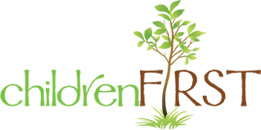Research
There are hundreds of articles published in academic, peer-reviewed journals demonstrating the efficacy of ABA.
We have focused this short list on articles written by Dr. Lovaas, his protégés, or discussing his work.

1) 1987 study of intensive behavioral treatment
Behavioral treatment and normal educational and intellectual functioning in young autistic children Lovaas, O. I. (1987). [Source: https://psycnet.apa.org/record/1987-16420-001]
Journal of Consulting and Clinical Psychology, 55, 3-9.
This was the first study done that demonstrated a sizable minority, 47% of children, achieved normal intellectual, social, and adaptive behavior functioning. This is the study that no one believed when it was first published!
2) 1993 follow up study
Long-term outcome for children with autism who received early intensive behavioral treatment.
McEachin, J. J., Smith, T., & Lovaas, O. I. (1993). [Source: https://psycnet.apa.org/record/1993-22583-001]
American Journal on Mental Retardation, 97 (4), 359-372.
This is a follow up study of the children from the 1987 study, showing that they maintained their treatment gains across many years.
3) 2000 study replicating the 1987 Lovaas study
Randomized trial of intensive early intervention for children with pervasive developmental disorder. Smith, T., Green, A., & Wynn, J. (2000). [Source: https://pubmed.ncbi.nlm.nih.gov/10934569/]
American Journal of Mental Retardation, 105, 269-285.
The children in this study received slightly fewer hours, 30 per week, and the students placed in regular education classes decreased to 27%. This was a randomized study (addressing one of the criticisms of the original research) using the Lovaas Method of ABA.
4) 2005 study replicating the 1987 Lovaas study results
Intensive Behavioral Treatment for Children with Autism: Four-Year Outcome and Predictors.
Sallows, Glen O. & Graupner, Tamlynn D. (2005). [Source: https://eric.ed.gov/?q=wwcr%3ay&ff1=autGraupner%2c+Tamlynn+D.&id=EJ743029]
American Journal on Mental Retardation, 110 (6), 417-438.
This was a replication study of the 1987 study by the Wisconsin site. The results are extremely consistent with the original 1987 numbers- 48% of children at age seven were succeeding in mainstream settings.
5) 2010 review of published early intensive behavior intervention studies
Using participant data to extend the evidence base for Intensive Behavioral Intervention for children with autism.
Eldevik, S., Hastings, R.P., Hughes, J.C., Jahr, E., Eikeseth, S., & Cross, S. (2010). American Journal on Intellectual and Developmental Disabilities, 115, 381-405. [Source: https://psycnet.apa.org/record/2010-18980-003]
This robust review of research showed that children receiving behavioral intervention had better outcomes than for comparison groups. Intensity of hours, 35 hours per week and upwards, had the best gains.
6) 1999/2017 report from the New York State health department*
BEHAVIORAL AND EDUCATIONAL APPROACHES
This report recommends that a minimum of 20 hours per week of ABA be used in early intervention programs in NY state.
*The panel reconvened in 2017, reviewing new research, and again recommended 20 hours weekly. [Source: https://www.health.ny.gov/publications/20168.pdf]
“In deciding upon the intensity and duration of intervention for young children with ASD, it is important to recognize that based on available scientific evidence, it is not possible to accurately predict the optimal intensity that will be effective for any given child and family. However, it is recommended that behavioral programs include a minimum of approximately 20 hours per week of individualized intervention.”
Contact us here today to learn more about our services and to discuss how to get started!

